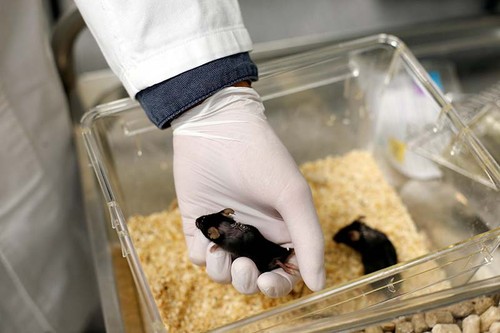 A paralysed mouse is removed from its enclosure in a lab at Ruhr University, where scientists discovered a way to restore the ability to walk in mice that had been paralysed after a complete spinal cord injury, in Bochum, Germany, on January 21, 2021. (Photo: Reuters) A paralysed mouse is removed from its enclosure in a lab at Ruhr University, where scientists discovered a way to restore the ability to walk in mice that had been paralysed after a complete spinal cord injury, in Bochum, Germany, on January 21, 2021. (Photo: Reuters) |
Spinal cord injuries in humans, often caused by sports or traffic accidents, leave them paralyzed because not all of the nerve fibers that carry information between muscles and the brain are able to grow back.
But the researchers from Ruhr University Bochum managed to stimulate the paralyzed mice’s nerve cells to regenerate using a designer protein. The paralyzed rodents that received the treatment started walking after two to three weeks.
The treatment involves injecting carriers of genetic information into the brain to produce the protein, called hyper-interleukin-6, according to the university’s website. The scientists said they will see if their method works on larger mammals.